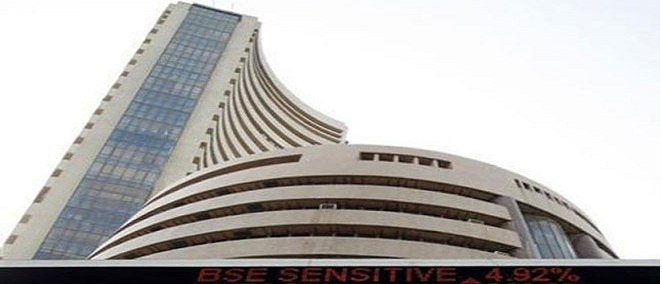Article of association refers to a document which specifies regulations for the operations of a firm. The article of association defines a company’s purpose and lays down the process of accomplishing tasks within an organization. It also includes the process of appointing directors and handling the financial records.
Blogs
Compound annual growth rate
Do you really need a life insurance policy?
Once I heard a sales person saying that – “Everyone should have at least two or three life insurance policy purchased on his name”. Then a question came into my mind that should we really buy a life insurance to cover our life or it was just a trick that salesman was using to sell his insurance products? Like me, many of us get confused when someone tells us that we should invest some amount of our saving in purchasing life insurance.
This article is the result of that movement when I got confused by the tricks of that salesman.
Buying life insurance policy for everyone, sometimes result in blockage of money. Why am I saying that? It’s because if we don’t have a need for life insurance then why should we invest in such a thing.
Now a question arise that what are the factors that determine whether we need to buy such a policy or not?
 In response to this question I would say that a person should buy life insurance policy, only when he has:
In response to this question I would say that a person should buy life insurance policy, only when he has:
- Dependants after him,
- To pay some kind of debt,
- To incur huge expense on the education of his children,
- To get his children married and so on.
Now on the other hand buying a life insurance does not make sense for a person who has not a family, who has not a single dependant after him, who has enough money to pay his debt.
Many of us argue that although they don’t have any need to purchase a life insurance but it is not a blockage of money. They consider life insurance as a good investment option.
I would like to tell that there are many alternatives of a life insurance in terms of investment option. Anyone who does not have any need for a life insurance; should not go for it only because it is a good investment option.
Investing in life insurance product is not wise because the amount of return, a person can earn from it, is equal to nothing as compared to other investment vehicles. The main thing is that insurance companies also invest the amount received from insured people and pay only a part of it as a return to these policy holders. So put it simply an insured person gets only a part of return earned by insurance companies from his capital.
Now, what should we do with this amount? Based upon the risk appetite of an investor, this amount can be invested in companies as owner’s fund or borrower’s fund. It simply means that if you have the capability to bear higher risk and want to earn maximum return from your investment then investment in equity fund is a good option. If you don’t want to take much risk with your investment then you can opt for safe investment vehicles such as debt instrument, mutual fund and so on.
Which type of life insurance policy should you opt for?
Once a friend of mine asked me that which type of life insurance policy should he choose, for covering his life? I told him that there are various types of life insurance policies in the market and he should opt for a suitable policy which provides maximum benefit to him.
I started telling him that he should opt for a policy that caters all his requirements. Then I explained him the following types of life insurance policy:
Term insurance policy: A term policy is one in which an insured person has to pay a lower amount of premiums in comparison to other life insurance policies. These policies are usually taken for the period of 5, 10, 15, 20 or 30 years. If during that period, policy holder dies only then the beneficiary of the policy holder is given a specified sum mentioned in the contract. On the other hand if policy holder survives the policy period then nothing is returned to insured or his/ her beneficiary.
The amount of premiums are less for the younger ones and more for the older people as the chances of their death are more than the younger ones. For individuals who have crossed their 60s, it is almost unaffordable to pay the premiums of such a policy.
Endowment policy: Endowment policies are more popular policies in every corner of the world. It is because these policies provide the benefit of periodic premiums and a specified lump sum paid to the insured person even in case of the survival of the policy holder.
Insurance companies are mixing up these policies with other insurance policies to attract more customers. In many schemes, customers are provided with the option of investing their money into the various fund options provided by the insurer. These life insurance policies help the customer profit from rising markets.
Unit linked insurance plans (ULIPs): ULIPs are market linked life insurance policies that provide the policy holders double advantage of life cover and wealth maximization. These policies provide holders, the benefits of investing a part of their amount in the market products. Based upon the risk appetite of policy holder, these insurance policies provide a variety of fund options such as equity and debt instruments. The remaining part of the money paid by the insured is used to cover their life.
Money back policy: Preferred by many people, money back insurance policy provides the benefit of partial survival. It means that policy holders are provided periodic premiums of the sum assured. If during the tenure of the policy, the policy holder dies then the full amount is returned to the beneficiary without the deduction of money paid by the insurer at intervals. On the other hand if policy holders survive the tenure of this policy then they are paid the remaining amount of money, assured in the contract.
Annuity/ pension policy: This type of policy does not provide life insurance cover to the policy holders’ but merely provides a guaranteed income either for whole life of insured or for a specific time mentioned in the contract.
Policy holders have to pay a specific amount of money as premiums for a specific time period and after the end of such period, they are returned a specific amount of money periodically. In case of the death of policy holder or after the fixed annuity period expires for annuity payments, the policy holder are returned a sum assured in the contract.
Whole life policy: Validity of this insurance policy is not defined and thus whole life insurance policy covers policy holders until their death. It means that policy holders are covered throughout their life by such a policy.
How is Sensex calculated?
Table of Contents

Many of us want to know that how is Sensex calculated? This article is written for the purpose of answering the same question.
Earlier Sensex was calculated based on full market capitalization. But since September 1, 2003 this index has been calculating on the basis of free float market capitalization methodology.
The term ‘free float market capitalization’ refers to that proportion of total shares which are available for trading in stock market. It means that out of total no. of issued shares, if promoters’ holdings, government holdings and other locked in shares are excluded then remaining shares represent free float market capitalization. So if put it simply, free float market capitalization is the proportion of total shares available for trading to the general public.
Process of calculating Sensex:
Step 1: Determination of total market capitalization: The Sensex comprises of 30 stocks which are listed on BSE and represents various sectors of Indian economy. The very first step in the calculation of Sensex is the determination of total market capitalization of these 30 companies. For this purpose, market capitalization of each company is calculated and then added up to reach total market capitalization of Sensex constituents.
Market capitalization of an individual company is calculated by using the given formula:
Market capitalization = Total no. of issued shares × market value of each share.
Step 2: Calculation of free float market capitalization: The second step in the calculation of Sensex is the determination of free float market capitalization. This is done by multiplying the free float factor by the total market capitalization of that company. This free float factor can be taken from BSE website. The free float factor tells that how much shares of a company is available for trading to the general public. If free float market factor of a company is 0.65 then it means that only 65% of total shares are available for trading to the general public.
Step 3: Establishing a link to the base period: This is the most important step in calculation of Sensex. The only thing that links the current Sensex price and the Sensex price at the time of base period, is this step. In this step the free float market capitalization of the index constituents is divided by a number known as the index divisor.
Index divisor is an arbitrary no. which is used in the calculation of an index. This number is calculated by dividing the base year’s index value by base period’s market capitalization of the concerned stock market.
Example: How is Sensex calculated?
Let’s suppose that the Sensex is consisting of only 3 stocks i.e. X, Y and Z. The given table shows that how Sensex is calculated:
| Step 1 | |||
| Total stock | Market price of each stock | Market capitalization | |
| X | 1,00,000 | 40 | 40,00,000 |
| Y | 90,000 | 55 | 49,50,000 |
| Z | 1,35,000 | 32 | 43,20,000 |
| Total market capitalization | 1,32,70,000 | ||
| Step 2 | |||
| Market capitalization | Free float factor | ||
| X | 40,00,000 | 0.75 | 30,00,000 |
| Y | 49,50,000 | 0.85 | 42,07,500 |
| Z | 43,20,000 | 0.70 | 30,24,000 |
| Total free float market capitalization | 102,31,500 | ||
| Base year | 1978 – 79 |
| Base Index | 100 |
| 1978 – 79 | Current value | |
| Market capitalization on | 60,000* | 102,31,500 |
*Assumed value for calculation
| Step 3 | ||
| Sensex | 10231500 × (100/ 60,000) | 17052.5 |



